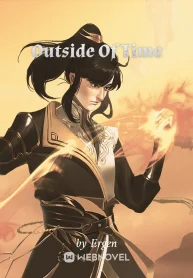v2 Chapter 206: What others can't do, I can do it!
Genius to remember the address of this site in one second: []https://The fastest update! No ads!
After Mu Yang finished speaking, Luo Xiang emphasized: "I agree with Mr. Mu Yang's point of view, the first and second evidences are just suspicious points and are not enough to prove our infringement;
Zhang San killed someone with a knife and threw it away, but you accidentally picked up the murder knife. Can I say that you killed someone?
You certainly don't want to!
The plaintiff's third proof, the listed technologies are not within the protection scope of igp's technology patents, the similarity is not enough to indicate infringement, but whether there are core differences and whether the patent law recognizes them.
There are some similarities, as long as it is an improvement, then it can become a new patent, and there is no claim of infringement.
The first point listed, the appearance is similar, the ratio of length and width is the same, but there are many structures that are not similar, such as our company's chassis, the bending point is 3 knives, while the igp's is 4 knives; their holes are drilled, And our holes are laser cut, and they are elliptical, with different positions and functions, all of the above are beyond the scope of protection of the igp patent...
For example, I bought a knife from someone else, and I took it back and modified it. Although it is still a knife, and its structure and shape are similar, I used a new manufacturing process, and then applied for this process, and the patent application was approved. It is an infringement, and if the patent is not approved, it cannot be said to be an infringement.
13 is similar to b, but the meaning is the same?
It is definitely different, the main structure is different, how can it be said that it is the same!
Taking the similarity as an infringement, this is not justified.
The second point is to use the same spare parts up to 50%. I would like to ask the plaintiff. I think the manufacturers of these spare parts must not agree to sell them to your family for use only.
Thirdly, according to the principle of comprehensive coverage, we can regard the technical features of the igp laser for protection as a+b+c. Because of the lack of technical feature c, we should determine that our technical solution does not fall within the scope of protection of the patent. …”
The comprehensive coverage principle referred to by Luo Xiang refers to one of the five principles of the patent infringement determination method, and it is also the most important principle.
Although the patent systems vary from country to country, the overall infringement determination principles are similar, and they all adhere to five principles: the principle of comprehensive coverage, the principle of equivalence, the principle of estoppel, the principle of donation and the principle of deliberate exclusion.
Generally, the principle of comprehensive coverage is used to judge first. As Luo Xiang said just now, they divide the technical characteristics of the protection scope of igp lasers into a+b+c. If the technical solution of Xinghai Group includes a+b+c, no matter whether there is any later If d+e is added, then this technical solution is infringing.
However, if a certain feature is missing, such as the absence of c, even if it contains a+b, for example, Xinghai's technical solution features include a+b+d, and it is determined that it does not fall within the scope of protection of this patent, then this technical solution is not infringing.
If you don't understand this, you may be convicted of infringement at the first instance.
This kind of thing is not unique. Some judges and jury experts cannot understand this, resulting in misjudgment.
When determining patent infringement, the principle of comprehensive coverage is usually used as the first step in the determination of patent infringement.
The simplest way is that when it is found that the product is lacking one or more technical features compared with the content of the patent claims, it can be determined as non-infringing, and there is no need to make subsequent judgments.
Of course, this requires the quality of the patent. At the same time, it is necessary to understand similar patents and be very familiar with them. The workload is very large.
Muyang has a good understanding of this patent infringement method. After he got the technology from the Achievement Point store, he did not copy it completely, because the reading system would not help him determine whether the technology constituted infringement with other people's patents.
Judge: "The first and second evidence of the plaintiff is insufficient to prove the infringement of the defendant;
The third proof, what do the jury experts think? "
Jury expert: "The defendant's attorney is right. According to the principle of comprehensive coverage, the evidence listed by the plaintiff is insufficient to prove that Xinghai Group's laser solution constitutes infringement."
Judge: "Plaintiff, does the plaintiff have anything else to prove?"
Igp's attorney retorted: "I disagree with the defendant's attorney's point of view. Xinghai Group used igp's lasers to imitate on the basis of this ipg laser. All the similarities have been explained, Xinghai Group already has the intention of imitating, from the starting point constitutes infringement.
The most critical similarity is that the working principle of Xinghai Group's laser is the same as that of our igp laser. This alone is enough to indicate that it has been infringed. "
Jury expert: "If the core structure of Xinghai Group's laser is exactly the same as that of igp, and igp has carried out separate patent protection for the core structure, then the possibility of infringement by the defendant is very high.
We need to conduct a careful comparative analysis on this issue, and ask the plaintiff to provide evidence to prove it. "
Mu Yang retorted: "Our laser has already applied for an invention patent."
Before he could finish speaking, the attorney representing igp directly retorted: "The plaintiff has optimized our laser and applied for a new invention patent. It doesn't mean that the patent does not mean there is no infringement!"
"It makes sense!" The jury expert agreed.
Wow!
The audience listening to the scene was surprised.
Don't you have a new patent, can't it show that there is no infringement?
At this point, many people at the scene were confused.
Mu Yang had to admire the plaintiff's lawyer, the ability to intervene was great, and it seemed that he had a thorough understanding of patent law.
Damn, lawyers' mouths are powerful.
At the beginning, Mu Yang had already suppressed his arrogance, but it didn't take long for him to regain his mentality.
Although Mu Yang was a little puzzled, the words of the igp and the jury experts were not without reason.
It does not mean that applying for an invention patent does not constitute infringement.
This patent law distinction is a bit of a brain-burner.
Take a simple example.
Zhang San applied for a patent for a stool. The content is very simple, and the scope of the claim is only one, that is, a stool includes a seat and four supporting legs.
Zhang San owns the patent for the stool, and transformed the technology into a commodity.
After a period of time, Li Si found it uncomfortable to sit on the stool for a long time. If there is a backrest on the stool, it will greatly improve the comfort.
So, Li Si invented the chair and was ready to apply for a patent.
The technical solution of the chair also includes a seat and four legs, the improvement lies in the addition of a backrest.
So, can Li Si apply for a patent for the chair?
The answer is: yes.
Because the technical solution applied for a patent is not necessarily a completely original invention, and improvements in existing products and existing technologies can also be patented.
Nowadays, with the rapid development of science and technology, completely original basic inventions are rare, and most inventions and creations are improvements on the basis of existing technologies.
The chair invented by Li Si solves the uncomfortable problem of sitting on a stool for a long time. It is innovative, so it can apply for a patent.
The same is true for corporate research and development, which is based on existing technical solutions to explore and innovate, so as to solve new problems, improve production efficiency and people's quality of life, that is to say, as long as the solution is creative, it can apply for a patent.
So the next question is, can Li Si produce and sell chairs?
The answer is: no.
Being able to apply for a patent is not the same as production and sales, because production and sales cause loss of profits to Zhang San.
As long as a product includes all the technical features of the existing patent claims, it falls within the scope of protection of the patent, that is, the principle of comprehensive coverage mentioned by Luo Xiang.
The chair includes a seat and four supporting legs, which constitute all the constituent elements of the stool, so it falls within the scope of patent protection of the stool. Therefore, if Li Si produces and sells the chair, the patent right of the stool is infringed.
However, if Li Si owns the patent for the chair, others without Li Si's authorization, even Zhang San, cannot produce Li Si's chair, otherwise it will infringe the patent right of Li Si's chair.
For Li Si, although he can't produce chairs, he has the patent right of chairs, so he has the monopoly right of chairs.
So, what is the significance of Li Si's patent application?
We know that no one applies for patents just to obtain monopoly rights above the name, but to obtain real profits in product sales through the protection of patent rights.
Generally speaking, compared with stools, chairs are more comfortable to sit on, more popular with consumers, and have higher sales volume and greater economic value.
Both Zhang San and Li Si want to get more economic returns by selling chairs, but due to the existence of each other's patents, neither of them can produce chairs.
If the chair is not produced because of Zhang San's stool patent, then Li Si's patent will lose its meaning. For the above dilemma, the only way to achieve a win-win situation is through cooperation.
Option 1, patent authorization. Zhang San authorized Li Si to use the stool patent, and Li Si paid Zhang San the patent royalties for the stool, and then began to produce the chair.
The second option is cross-licensing. Zhang San authorized Li Si to use the stool patent, and Li Si authorized Zhang San the chair patent. In this way, both of them can produce stools and chairs, and through cooperation, a win-win situation is achieved, and the value of the patent is reflected.
The next situation is that Zhang San and Li Si started to cooperate and made a lot of money by selling chairs. Wang Wu saw that he was envious and wanted to produce chairs to make money.
If Zhang San and Li Si do not license the invention patent of Wang Wu's chair at this time, what should Wang Wu do?
Option 1, Wang Wu himself continued to develop on the basis of the chair, such as adding armrests to further improve the comfort; or improving the chair to lay flat to apply for a reclining chair patent. There is also a big market for armchairs and reclining chairs. If Zhang San and Li Si also want to produce these two types of products, they also need permission from Wang Wu. In this way, Wang Wu obtained new patent rights through independent research and development, which increased the bargaining chip for himself when he faced Zhang and Li in the future.
Option 2, Wang Wu can study the patents of the existing chairs and conduct technical evasion. For example, Wang Wu can develop a stool or chair that only needs three legs, and can avoid the protection scope of their patent.
In general.
Patents can be applied for, but if the new patent covers the scope of igp's patent protection, if it is produced and sold, it will constitute infringement.
If it is not produced, of course it does not constitute infringement.
Likewise, igp cannot manufacture and sell Xinghai lasers.
Mu Yang directly refuted igp's attorney: "You haven't seen my invention patent, so you just say that our laser is infringing.
However, even if you read it, you probably won't understand it, so it's no wonder you.
My invention patent has just received a release number and has not been published yet.
Although it has not yet been authorized, it is completely different from the lasers in the international market. It is not a problem to pass the authorization in the end. I can say that the technical level of Xinghai Group's lasers has reached the top level in the world.
It can also be said that it is the first in the world!
This sentence is what I said, and the on-site media reporters can report it like this!
First, this laser was invented by me, completely avoiding the scope of igp's laser technology protection. From the principle of comprehensive coverage, it does not constitute infringement at all;
Second, the principle of our laser is fundamentally different from that of igp, let alone infringement.
For this laser patent, I have obtained three papers in the second area of SCI and four papers in the third area of SCI, which has proved that I have this ability to develop lasers.
I think the plaintiff did not understand the basic principles of our lasers at all. All jury experts can review and compare the laser patents of both parties. "
"What I want to say is that what others can't do, I Muyang can do, Xinghai Group can do it!
President Lu, don't judge the younger generation of China by your own eyes. Our younger generation is no worse than the younger generation abroad.
In the field of top technology, what foreign countries can do, we Chinese people can do the same;
What we can't do abroad does not mean that we Chinese people can't do it! "
After Mu Yang finished speaking, he raised his hand to copy the patent copies and papers.
After being approved by the judge, the staff of took his information and distributed it to the jury experts.
The lawyer representing the igp, as well as Lu Yiming, were so shocked by the sudden change that they were in a state of semi-dementia as if they had been electrocuted.
In an instant, at a loss!
Ryan Ryan, who was listening in, obviously saw the changes in the two people at the scene, and through the translation, he also knew what was going on.
impossible!
How could Xinghai Group develop the world's most advanced laser, and it is completely different from igp's laser.
Absolutely impossible!
------off topic-----
Originally, I wanted to explain the patent infringement trial method in detail, but it seems that many people do not like to read this
7017k
After Mu Yang finished speaking, Luo Xiang emphasized: "I agree with Mr. Mu Yang's point of view, the first and second evidences are just suspicious points and are not enough to prove our infringement;
Zhang San killed someone with a knife and threw it away, but you accidentally picked up the murder knife. Can I say that you killed someone?
You certainly don't want to!
The plaintiff's third proof, the listed technologies are not within the protection scope of igp's technology patents, the similarity is not enough to indicate infringement, but whether there are core differences and whether the patent law recognizes them.
There are some similarities, as long as it is an improvement, then it can become a new patent, and there is no claim of infringement.
The first point listed, the appearance is similar, the ratio of length and width is the same, but there are many structures that are not similar, such as our company's chassis, the bending point is 3 knives, while the igp's is 4 knives; their holes are drilled, And our holes are laser cut, and they are elliptical, with different positions and functions, all of the above are beyond the scope of protection of the igp patent...
For example, I bought a knife from someone else, and I took it back and modified it. Although it is still a knife, and its structure and shape are similar, I used a new manufacturing process, and then applied for this process, and the patent application was approved. It is an infringement, and if the patent is not approved, it cannot be said to be an infringement.
13 is similar to b, but the meaning is the same?
It is definitely different, the main structure is different, how can it be said that it is the same!
Taking the similarity as an infringement, this is not justified.
The second point is to use the same spare parts up to 50%. I would like to ask the plaintiff. I think the manufacturers of these spare parts must not agree to sell them to your family for use only.
Thirdly, according to the principle of comprehensive coverage, we can regard the technical features of the igp laser for protection as a+b+c. Because of the lack of technical feature c, we should determine that our technical solution does not fall within the scope of protection of the patent. …”
The comprehensive coverage principle referred to by Luo Xiang refers to one of the five principles of the patent infringement determination method, and it is also the most important principle.
Although the patent systems vary from country to country, the overall infringement determination principles are similar, and they all adhere to five principles: the principle of comprehensive coverage, the principle of equivalence, the principle of estoppel, the principle of donation and the principle of deliberate exclusion.
Generally, the principle of comprehensive coverage is used to judge first. As Luo Xiang said just now, they divide the technical characteristics of the protection scope of igp lasers into a+b+c. If the technical solution of Xinghai Group includes a+b+c, no matter whether there is any later If d+e is added, then this technical solution is infringing.
However, if a certain feature is missing, such as the absence of c, even if it contains a+b, for example, Xinghai's technical solution features include a+b+d, and it is determined that it does not fall within the scope of protection of this patent, then this technical solution is not infringing.
If you don't understand this, you may be convicted of infringement at the first instance.
This kind of thing is not unique. Some judges and jury experts cannot understand this, resulting in misjudgment.
When determining patent infringement, the principle of comprehensive coverage is usually used as the first step in the determination of patent infringement.
The simplest way is that when it is found that the product is lacking one or more technical features compared with the content of the patent claims, it can be determined as non-infringing, and there is no need to make subsequent judgments.
Of course, this requires the quality of the patent. At the same time, it is necessary to understand similar patents and be very familiar with them. The workload is very large.
Muyang has a good understanding of this patent infringement method. After he got the technology from the Achievement Point store, he did not copy it completely, because the reading system would not help him determine whether the technology constituted infringement with other people's patents.
Judge: "The first and second evidence of the plaintiff is insufficient to prove the infringement of the defendant;
The third proof, what do the jury experts think? "
Jury expert: "The defendant's attorney is right. According to the principle of comprehensive coverage, the evidence listed by the plaintiff is insufficient to prove that Xinghai Group's laser solution constitutes infringement."
Judge: "Plaintiff, does the plaintiff have anything else to prove?"
Igp's attorney retorted: "I disagree with the defendant's attorney's point of view. Xinghai Group used igp's lasers to imitate on the basis of this ipg laser. All the similarities have been explained, Xinghai Group already has the intention of imitating, from the starting point constitutes infringement.
The most critical similarity is that the working principle of Xinghai Group's laser is the same as that of our igp laser. This alone is enough to indicate that it has been infringed. "
Jury expert: "If the core structure of Xinghai Group's laser is exactly the same as that of igp, and igp has carried out separate patent protection for the core structure, then the possibility of infringement by the defendant is very high.
We need to conduct a careful comparative analysis on this issue, and ask the plaintiff to provide evidence to prove it. "
Mu Yang retorted: "Our laser has already applied for an invention patent."
Before he could finish speaking, the attorney representing igp directly retorted: "The plaintiff has optimized our laser and applied for a new invention patent. It doesn't mean that the patent does not mean there is no infringement!"
"It makes sense!" The jury expert agreed.
Wow!
The audience listening to the scene was surprised.
Don't you have a new patent, can't it show that there is no infringement?
At this point, many people at the scene were confused.
Mu Yang had to admire the plaintiff's lawyer, the ability to intervene was great, and it seemed that he had a thorough understanding of patent law.
Damn, lawyers' mouths are powerful.
At the beginning, Mu Yang had already suppressed his arrogance, but it didn't take long for him to regain his mentality.
Although Mu Yang was a little puzzled, the words of the igp and the jury experts were not without reason.
It does not mean that applying for an invention patent does not constitute infringement.
This patent law distinction is a bit of a brain-burner.
Take a simple example.
Zhang San applied for a patent for a stool. The content is very simple, and the scope of the claim is only one, that is, a stool includes a seat and four supporting legs.
Zhang San owns the patent for the stool, and transformed the technology into a commodity.
After a period of time, Li Si found it uncomfortable to sit on the stool for a long time. If there is a backrest on the stool, it will greatly improve the comfort.
So, Li Si invented the chair and was ready to apply for a patent.
The technical solution of the chair also includes a seat and four legs, the improvement lies in the addition of a backrest.
So, can Li Si apply for a patent for the chair?
The answer is: yes.
Because the technical solution applied for a patent is not necessarily a completely original invention, and improvements in existing products and existing technologies can also be patented.
Nowadays, with the rapid development of science and technology, completely original basic inventions are rare, and most inventions and creations are improvements on the basis of existing technologies.
The chair invented by Li Si solves the uncomfortable problem of sitting on a stool for a long time. It is innovative, so it can apply for a patent.
The same is true for corporate research and development, which is based on existing technical solutions to explore and innovate, so as to solve new problems, improve production efficiency and people's quality of life, that is to say, as long as the solution is creative, it can apply for a patent.
So the next question is, can Li Si produce and sell chairs?
The answer is: no.
Being able to apply for a patent is not the same as production and sales, because production and sales cause loss of profits to Zhang San.
As long as a product includes all the technical features of the existing patent claims, it falls within the scope of protection of the patent, that is, the principle of comprehensive coverage mentioned by Luo Xiang.
The chair includes a seat and four supporting legs, which constitute all the constituent elements of the stool, so it falls within the scope of patent protection of the stool. Therefore, if Li Si produces and sells the chair, the patent right of the stool is infringed.
However, if Li Si owns the patent for the chair, others without Li Si's authorization, even Zhang San, cannot produce Li Si's chair, otherwise it will infringe the patent right of Li Si's chair.
For Li Si, although he can't produce chairs, he has the patent right of chairs, so he has the monopoly right of chairs.
So, what is the significance of Li Si's patent application?
We know that no one applies for patents just to obtain monopoly rights above the name, but to obtain real profits in product sales through the protection of patent rights.
Generally speaking, compared with stools, chairs are more comfortable to sit on, more popular with consumers, and have higher sales volume and greater economic value.
Both Zhang San and Li Si want to get more economic returns by selling chairs, but due to the existence of each other's patents, neither of them can produce chairs.
If the chair is not produced because of Zhang San's stool patent, then Li Si's patent will lose its meaning. For the above dilemma, the only way to achieve a win-win situation is through cooperation.
Option 1, patent authorization. Zhang San authorized Li Si to use the stool patent, and Li Si paid Zhang San the patent royalties for the stool, and then began to produce the chair.
The second option is cross-licensing. Zhang San authorized Li Si to use the stool patent, and Li Si authorized Zhang San the chair patent. In this way, both of them can produce stools and chairs, and through cooperation, a win-win situation is achieved, and the value of the patent is reflected.
The next situation is that Zhang San and Li Si started to cooperate and made a lot of money by selling chairs. Wang Wu saw that he was envious and wanted to produce chairs to make money.
If Zhang San and Li Si do not license the invention patent of Wang Wu's chair at this time, what should Wang Wu do?
Option 1, Wang Wu himself continued to develop on the basis of the chair, such as adding armrests to further improve the comfort; or improving the chair to lay flat to apply for a reclining chair patent. There is also a big market for armchairs and reclining chairs. If Zhang San and Li Si also want to produce these two types of products, they also need permission from Wang Wu. In this way, Wang Wu obtained new patent rights through independent research and development, which increased the bargaining chip for himself when he faced Zhang and Li in the future.
Option 2, Wang Wu can study the patents of the existing chairs and conduct technical evasion. For example, Wang Wu can develop a stool or chair that only needs three legs, and can avoid the protection scope of their patent.
In general.
Patents can be applied for, but if the new patent covers the scope of igp's patent protection, if it is produced and sold, it will constitute infringement.
If it is not produced, of course it does not constitute infringement.
Likewise, igp cannot manufacture and sell Xinghai lasers.
Mu Yang directly refuted igp's attorney: "You haven't seen my invention patent, so you just say that our laser is infringing.
However, even if you read it, you probably won't understand it, so it's no wonder you.
My invention patent has just received a release number and has not been published yet.
Although it has not yet been authorized, it is completely different from the lasers in the international market. It is not a problem to pass the authorization in the end. I can say that the technical level of Xinghai Group's lasers has reached the top level in the world.
It can also be said that it is the first in the world!
This sentence is what I said, and the on-site media reporters can report it like this!
First, this laser was invented by me, completely avoiding the scope of igp's laser technology protection. From the principle of comprehensive coverage, it does not constitute infringement at all;
Second, the principle of our laser is fundamentally different from that of igp, let alone infringement.
For this laser patent, I have obtained three papers in the second area of SCI and four papers in the third area of SCI, which has proved that I have this ability to develop lasers.
I think the plaintiff did not understand the basic principles of our lasers at all. All jury experts can review and compare the laser patents of both parties. "
"What I want to say is that what others can't do, I Muyang can do, Xinghai Group can do it!
President Lu, don't judge the younger generation of China by your own eyes. Our younger generation is no worse than the younger generation abroad.
In the field of top technology, what foreign countries can do, we Chinese people can do the same;
What we can't do abroad does not mean that we Chinese people can't do it! "
After Mu Yang finished speaking, he raised his hand to copy the patent copies and papers.
After being approved by the judge, the staff of took his information and distributed it to the jury experts.
The lawyer representing the igp, as well as Lu Yiming, were so shocked by the sudden change that they were in a state of semi-dementia as if they had been electrocuted.
In an instant, at a loss!
Ryan Ryan, who was listening in, obviously saw the changes in the two people at the scene, and through the translation, he also knew what was going on.
impossible!
How could Xinghai Group develop the world's most advanced laser, and it is completely different from igp's laser.
Absolutely impossible!
------off topic-----
Originally, I wanted to explain the patent infringement trial method in detail, but it seems that many people do not like to read this
7017k







